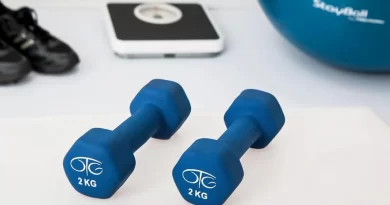Telehealth: What Seniors Need to Know
Telehealth is the use of telecommunication to deliver healthcare. According to a Senior Consumer survey, more than half of retirees are interested in telemedicine. Telemedicine empowers people with mobility issues and complex medical conditions to stay in their own home. It’s a highly convenient option for seniors aging in place at home. For some people it can increase access to healthcare, especially in rural areas.
While telehealth is more convenient than a medical visit, the technology is not as simple as just dropping by the hospital – a recent study shows that one-third of retirees may experience difficulties here. Here’s what you or a senior you know should know to set up a telehealth system.
Talk With the Healthcare Team
Is telehealth a good fit for the senior’s situation? Discuss this with patient and healthcare team. Questions to consider include how the senior’s personal health information will be protected, and what special equipment may be needed.
You’ll want to know what services are offered by telehealth, and what services that a senior will still need to go to the medical facility for. Can a patient schedule visits through the telehealth software? Will this require downloading an application every time? And what if your senior needs a quick opinion?
Prepare the Home
First of all, check if the home’s internet is fast and stable enough for video calls. You can try a test run with Skype or Zoom. Is the video choppy or the audio fuzzy? You might need to upgrade the plan or move the modem closer to the computer.
Once the internet’s sorted out, set up the space for the senior’s telehealth meetings. Ideally, it will be in a quiet and private room with few distractions. Set up a seat facing a window if at all possible. If not, draw the blinds and set up fairly bright but not glaring lights. Doctors need to be able see their patients clearly or they might miss important health cues.
Seniors who have weak voices may need to sit closer to the computer or use a plug-in external microphone. A clip-on microphone may be most convenient for bedbound people. If they’re reclining or very close to the camera, check that the video’s still in focus. Does your senior have trouble hearing the audio? Bluetooth-capable hearing aids (such as these smart ones noted by AARP) can play audio directly from the computer.
Finally, you may need smart monitoring devices to monitor blood glucose, oxygen levels, heartbeat, and more. Some telehealth systems may require the patient to check in daily, while others may require monitoring devices to be worn most or all of the time. These devices update the patient’s medical chart, letting the healthcare team monitor them remotely. Some of this may mesh with existing wearables and devices such as life alert systems for fall detection, reminders, and other such aids.
Set Up the Programs
Your medical facility will give you instructions explaining the setup process. You’ll need to download software and possibly update your computer’s antivirus protection. If it hasn’t already been done, you’ll have to create the senior’s account with the hospital’s online portal. You may need information such as insurance number, maiden name, etc.
After getting a username, come up with a solid password. The most secure ones are long strings of letters, numbers, and characters. These can be so complex that a password manager program is needed to keep up. Some seniors distrust these managers or dislike not having direct access to their medical account: in this case create something uniquely memorable but secure – and don’t recycle an existing password, from a bank account for example.
Test the System
Check the video and audio quality at least one day before the first telehealth appointment. Many such programs have a ‘test’ button. If not, you can test it by contacting from another room on another device if possible, or get a friend to help from another location.
Check that the patient in focus, and clearly audible. Make sure your senior can navigate the screen. You may need to adjust position or equipment. For seniors who struggle to operate the computer, write out a cheat-sheet or try color-coding important keys with post-it notes.
The day of the first appointment, have a telephone handy or email open. Many telehealth portals use two-factor authentication to set up the video call. Or a patient may be sent a meeting passcode to join a doctor’s teleconference call. If you’re still struggling, the hospital or telehealth software provider should have a support system to walk you through troubleshooting the system.
Telehealth and You
Telehealth is a highly convenient way to handle routine aspects of medical care. It offers seniors with a variety of health issues the chance to stay at home and keep their independence. Telehealth is also a real time and money-saver.
Because it’s grown so popular, telehealth is offered by practices across the medical field. The software that makes it possible takes a little setting up but is otherwise straightforward to use. If you get stuck, your hospital has the resources to guide you. After all, telehealth is convenient for the healthcare team as well as for your senior. They’ll be happy to work with you to get the system going.




